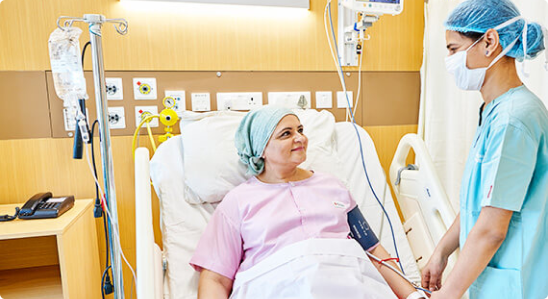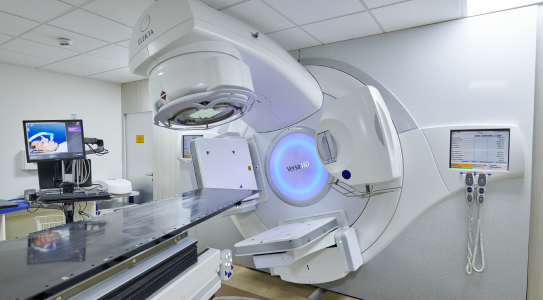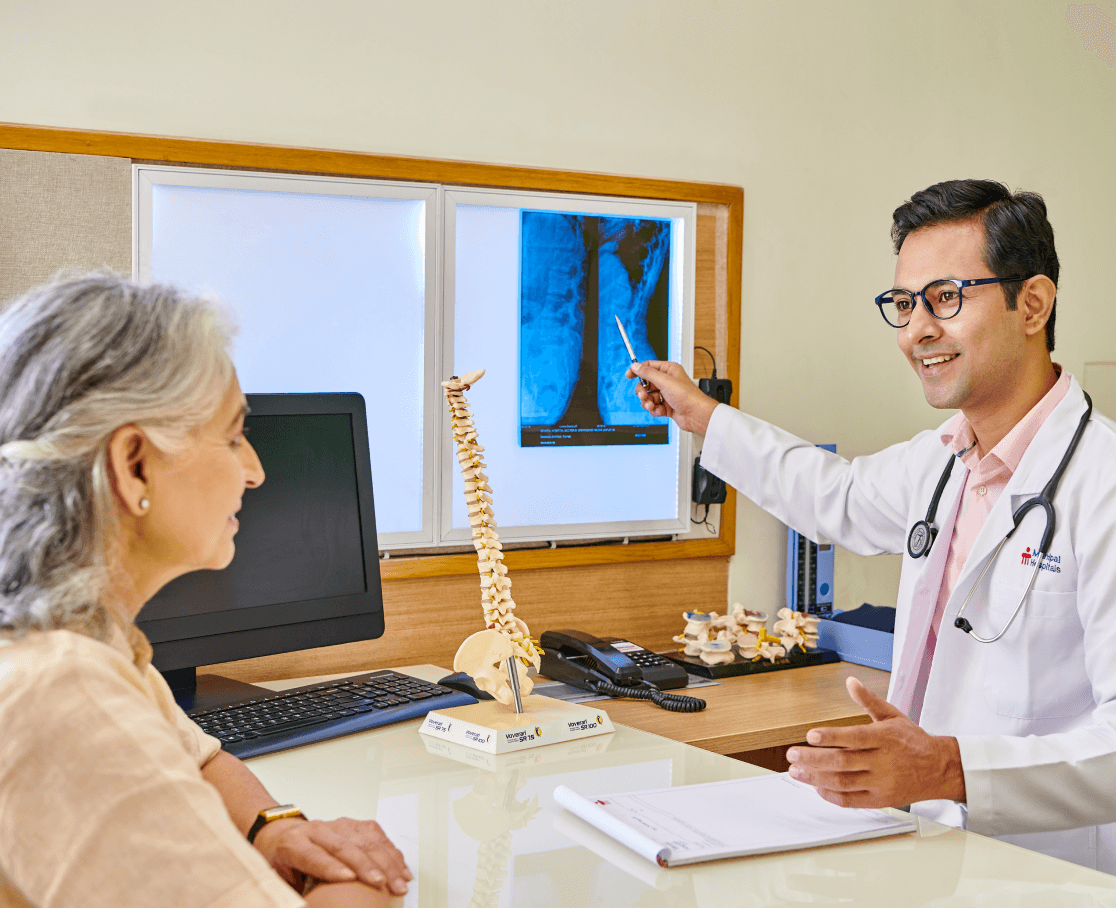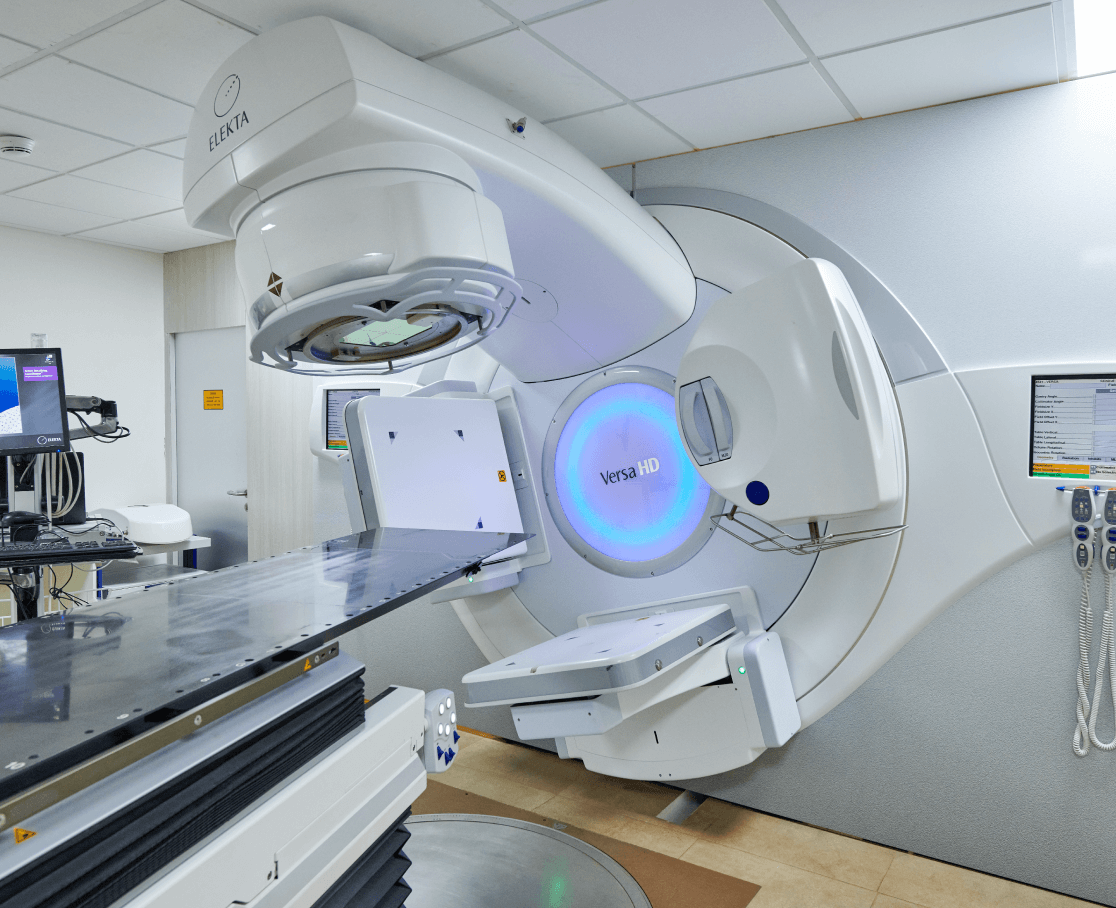×
Select Your Country
 International
International

×
Select Your Country
 International
International

International Current


-icon.png)
Pulmonology is the study of diagnosis, prevention and treatment of various diseases involving the lungs and respiratory tract. It is also known as respirology, pneumonology, chest medicine or pneumology. Manipal Hospitals Global is the best pulmonology hospital in India treating respiratory disorders. Some of the most common respiratory disorders are chronic obstructive pulmonary disease (COPD), asthma, tuberculosis (TB), obstructive sleep apnoea, occupational lung diseases, sarcoidosis/interstitial lung disease, bronchiectasis and pulmonary hypertension (PH). As per stats, nearly 262 million people suffer from asthma, a common disease among children. Also, over 3 million people die each year from COPD. Hence, it is necessary to get proper care and treatment for pulmonary diseases as they prove to be fatal if delayed. Manipal Hospitals India is one of the world-renowned hospitals for treatment and cure of a wide gamut of respiratory disorders. Pulmonologists, also known as lung doctors, lung specialists, and chest doctors diagnose and treat diseases of the human respiratory system. You should immediately see a pulmonologist if you are having symptoms of respiratory diseases like difficulty in breathing, tightness in chest, wheezing, unintended weight loss, swelling in ankles, feet or legs, etc.

The Department of Pulmonology at Manipal hospital provides advanced and improved care for patients suffering from various respiratory conditions such as tuberculosis, asthma, sleep-disordered breathing, lung cancer, etc.
We have a highly qualified and well-trained team of the Best Pulmonologists in Delhi who are prompt and proactive in treating patients with simple to complex respiratory disorders. Visit our pulmonology hospital in India for respiratory disease treatment.
We at Manipal Hospital, have around-the-clock proactive staff and a well-equipped respiratory ICU, for the management of critically ill patients with respiratory failure, chest Injuries etc. Hence, Manipal is recognized as the Best Pulmonology Hospital In Delhi for offering advanced medical care. Consult with our pulmonologist today.
Our expert doctors take pride in providing state-of-the-art care and treatment with a patient-centric, empathetic approach for a variety of respiratory diseases such as asthma, COPD, sarcoidosis, bronchiectasis, and so on. Some of the major treatments that are available in Manipal Hospitals are:
Pneumonia: Depending on the cause of the illness, different medications are prescribed for patients. Antibiotics are used to treat bacterial pneumonia, antiviral medications are used to treat viral pneumonia, and antifungal medications are used to treat fungus pneumonia. Also, depending on the patient's clinical condition, IV fluids, oxygen therapy, and mechanical ventilation may be necessary.
Tuberculosis: For diagnosis of tuberculosis in children, Tuberculin skin test (Mantoux test) is the standard procedure. For all other patients, sputum AFB culture is used to detect the presence of TB bacteria. For treatment of TB, all patients receive the WHO-approved first-line treatment regimen. All patients receive their daily TB medicine under direct observation (DOTS).
Bronchial Asthma: It is diagnosed based on the person’s medical and family history of asthma and allergies and a physical examination using the Spirometry test. Although there is no sure-shot cure available for asthma, doctors treat patients to make them free of asthma symptoms. It includes a lot of medications mainly in the form of inhaled medications on in some cases, tablets.
Chronic Obstructive Pulmonary Disease (COPD): COPD can be diagnosed with the help of the patient’s medical history, like enquiring about smoking habits, exposure to airborne pollutants, family history, etc. There is no single physical examination for diagnosing COPD as it can be detected using various tests like Spirometry, imaging tests, peak flow test, etc. Similar to asthma, COPD doesn’t have a cure. Doctors prescribe inhaled medications to slow down the rate of progression.
Pulmonary Hypertension (PH): PH is a type of high blood pressure that affects the arteries in the lungs. It is diagnosed using blood tests and various imaging tests including X-ray, ECG, Echocardiogram, Computerized tomography (CT), Magnetic resonance imaging (MRI), etc. Although there is no known cure for pulmonary hypertension, there are treatments that can assist to lessen signs and symptoms and decrease the disease's progression.
Sleep Disorders: Some of the common sleep disorders that affect a large group of people are insomnia, restless legs syndrome, narcolepsy, and sleep apnoea. They can be easily diagnosed using physical examination and by identifying difficulties in sleeping. Several treatment methods are prescribed for patients including counselling, medications, therapy, etc.
Lung Cancer: It can be diagnosed using various tests and by enquiring patients about their medical history and symptoms. Some of the tests to diagnose lung cancer are chest X-ray, CT scan, PET (Proton Emission Tomography), bronchoscopy, sputum testing, etc. Treatment for lung cancer includes surgery, radiation therapy, chemotherapy, and targeted therapy.
Sarcoidosis / Interstitial Lung Diseases: The diagnosis and treatment for sarcoidosis are available in Manipal Hospitals. Both out-patient and in-patient treatment is available with world-class facilities.
Occupational Lung Diseases: Like other lung diseases, occupational lung diseases are diagnosed using imaging tests like X-ray and CT scan. Apart from that, doctors also check the medical history and symptoms of patients. The treatment procedure is different for different patients. It depends on various factors like age, overall health, medical history, extent and type of lung disease, etc.
Emphysema: It is a lung disorder that makes you feel out of breath. The diagnosis is done by looking over the patient's medical history and performing several imaging tests including X-rays, CT scans, etc. Once all tests are completed and emphysema is confirmed, the doctor recommends medications based on the severity of symptoms. Although it cannot be cured, the disease's course can be slowed down with the right treatments.
Pulmonary fibrosis and Cystic fibrosis: Both are lung diseases that occur when lung tissues become damaged and scarred. They can be diagnosed with the help of the patient’s medical history and performing some imaging tests like X-ray, CT scan, etc. There is no cure for pulmonary fibrosis and cystic fibrosis but proper medications can help ease symptoms, reduce complications and slow down the progress of the disease.
Lung Transplant: The transplantation of lungs is the only hope for patients whose lungs are fully damaged due to any disease or conditions like COPD, emphysema, cystic fibrosis, pulmonary hypertension (PH), etc. A diseased and unhealthy lung is replaced with a healthy lung from a donor during a lung transplant procedure. Where we could get the best Breathing Problem Treatment in India.
Some of the advanced procedures that doctors perform at our centre of excellence in pulmonology are:
Bronchoscopy: In bronchoscopy, the airways of the lungs are closely examined. A bronchoscope tube is inserted through your nose or mouth to perform the procedure. The bronchoscope, which has a light and a small camera, is inserted into the trachea, bronchi, and bronchioles of the lungs through the mouth. This method aims to identify the underlying cause of a lung condition.
Oxygen therapy: Oxygen therapy is used for patients who have low blood oxygen levels throughout the treatment.
Medical Thoracoscopy: After bronchoscopy, medical thoracoscopy is the second-most crucial endoscopic method used in respiratory medicine. Chest doctors frequently perform this operation, which is thought to be one of the main specialities of interventional pulmonology. After giving local anaesthesia or conscious sedation, medical thoracoscopy can be carried out in an endoscopic environment with non-disposable stiff or semi-flexible (semi-rigid) equipment. Therefore, medical thoracoscopy is far less expensive and invasive.
CT/USG Guided Lung Biopsy: Typically, a CT (computed tomography) guided lung biopsy is carried out to diagnose any suspicious lesions on the lungs, pleura, or mediastinum. It is done as an outpatient procedure when there is access to patient monitoring and support for difficulties. Under certain conditions, some lung and pleural biopsies can also be carried out under ultrasound guidance (USG).
Tube Thoracostomy: Inserting a tube (chest tube) into the pleural cavity to drain blood, bile, air, pus, or other fluids is known as a tube thoracostomy. After the injection of local anaesthetic, a cannula (hollow needle) is carefully inserted into the thorax to remove fluid or air from the pleural space for diagnostic or therapeutic purposes.
Pleurodesis: It is a method used to stick the surrounding membranes of the lungs together. The fluid does not build up in the area between the membranes thanks to pleurodesis (pleural space). Patients who experience severe fluid outpourings around the lungs undergo the surgery to stop the fluid from re-accumulating.

Some of the most common respiratory conditions treated at Manipal hospital includes:
Lung infections or chest infections:
Lung or chest infections include infections affecting your upper respiratory system or the lower respiratory system.
Common cold: This is primarily caused by viral infections. The airways get blocked due to inflammation and mucus secretion reducing the quality of life.
Pneumonia: This condition includes the build-up of thick mucus causing symptoms like difficulty in breathing, high fever, greenish or brownish phlegm, severe headaches, loss of appetite, etc. Young children and elderly people with weak immune system are commonly infected with pneumonia.
Coronavirus disease 2019 (COVID-19): A viral lung infection caused by SARS-CoV-2 (severe acute respiratory syndrome coronavirus 2). The symptoms widely vary from patient to patient including high temperature, cough, sore throat, difficulty in breathing, green sputum, loss of appetite, weight loss, fatigue, pneumonia etc.
Bronchiectasis: In this condition, bronchial tubes are damaged due to inflammation and excess mucus build-up.
Bronchitis: This condition involves inflammation of the lower airways. When inflammation of the lower airways occurs gradually, over a long period, it is called chronic bronchitis and is mostly caused due to smoking. Short-term inflammation of the bronchial airways is called acute bronchitis and is commonly caused by viruses.
Influenza: Also called flu, influenza is a viral infection that is more prominent during winter. Influenza viruses can be A, B, C and D type. Influenza A and B can be contagious and can cause a pandemic, particularly influenza A. Type C and D causes milder flu.
Tuberculosis (TB): Tuberculosis is a life-threatening bacterial infection caused by Mycobacterium tuberculosis. The bacteria commonly infect the lungs and sometimes can infect other parts including the brain, spine, or kidney.
Chronic lung infections:
Asthma: Asthma is a condition characterised by episodes of breathlessness due to narrowing of the airways. In some cases, it can become life-threatening. Symptoms of asthma include coughing, wheezing or a whistling sound while breathing, breathlessness, tightness in the chest, etc.
Chronic obstructive pulmonary disease (COPD): This is a progressive lung disease that is characterized by airflow blockage due to inflammation. The most common symptoms include breathlessness, wheezing and chronic cough.
Emphysema: This condition damages the air sacs in your lungs gradually.
Obstructive sleep apnoea: In this condition, the muscles around your throat relax during sleep causing irregular breathing. This is a serious lung condition causing symptoms such as loud snoring, waking up choking, excessive drowsiness during daytime, sleeping while driving or doing other activities, etc.
Pulmonary hypertension: Due to high blood pressure, the arteries of the lungs and heart are narrowed, blocking the blood flow to the lungs. This causes the heart to pump harder for the blood to reach your lungs resulting in the weakening of the heart muscle walls. If left untreated, this condition can be life-threatening causing heart failure, development of blood clots in the small arteries, irregular heartbeats, palpitation, bleeding in the lungs, etc.
Occupational lung diseases: It is also called Interstitial lung diseases, this condition affects the alveoli (air sacs in your lungs) due to scarring and inflammation. Constant exposure to dust or chemicals is the common cause of lung disease leading to disability or death. For example, asbestosis, silicosis, etc.
Genetic lung disorder:
Cystic fibrosis (CF): This is an inherited genetic disorder that causes secretions like mucus, sweat, digestive juices to become thick and block the lungs and other parts including the digestive system. The common symptoms when the lungs get affected include persistent cough, thick mucus or sputum, wheezing, recurrent lung infections, stuffy nose, etc. When left untreated, it may cause complications such as bronchiectasis, nasal polyps, haemoptysis (blood when you cough), pneumothorax and respiratory failure.
Lung cancer:
Lung cancer is the most common cause of cancer in India and mostly caused by tobacco smoking. With early diagnosis and timely treatment, lung cancer can be treated and cured effectively. We at Manipal hospital have an experienced and highly qualified team of multi-specialists including pulmonologists, oncologists, radiologists, surgeons, etc offering comprehensive care and treatment for lung cancer patients. Get in touch with the Top Lungs Specialist Hospital in Delhi to avail the best-in-class medical care.



.png)


